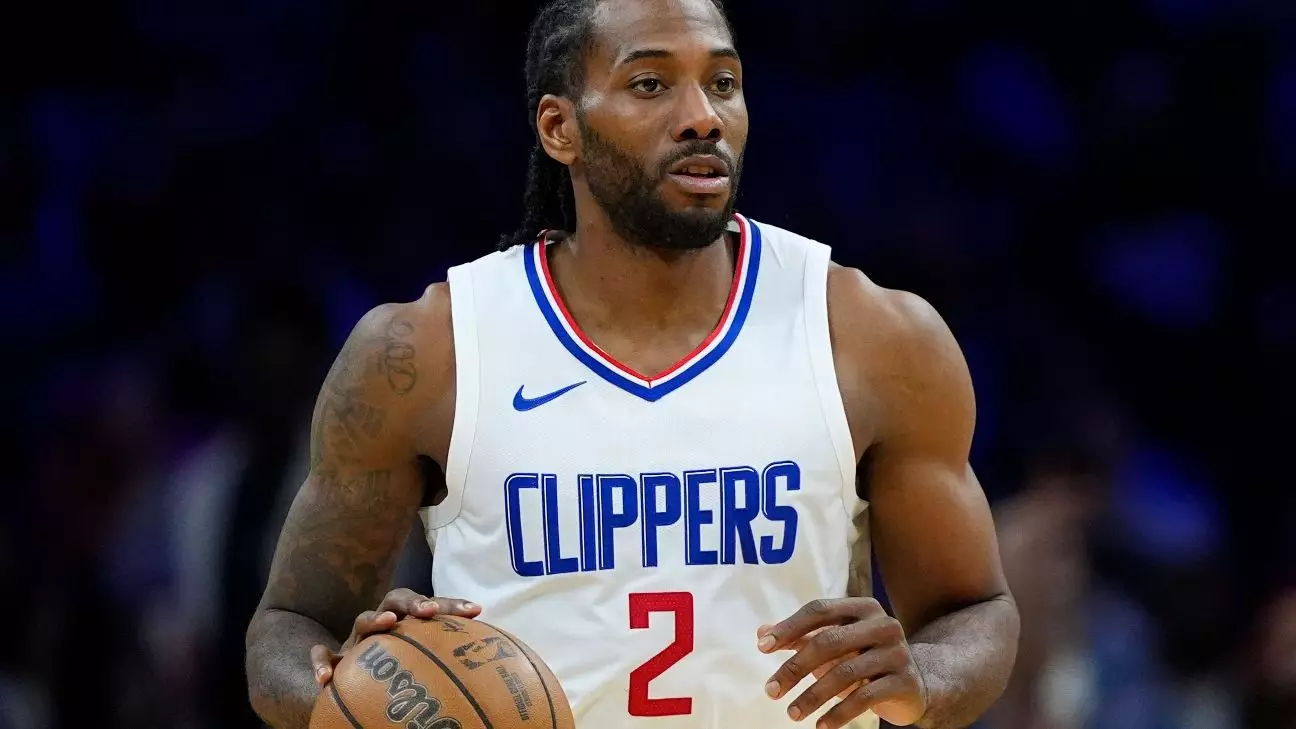In a recent update concerning the Los Angeles Clippers’ superstar Kawhi Leonard, team president Lawrence Frank elaborated on the current situation surrounding the athlete’s troublesome right knee. The swelling in Leonard’s knee has reportedly decreased “significantly,” yet the team has decided to take a cautious approach during training camp. This recent development highlights the delicate balance between the athlete’s desire to return to form and the necessity of a careful rehabilitation process. Frank noted that predicting Leonard’s readiness for the regular season remains uncertain, emphasizing the need for a responsive strategy based on how the knee reacts to ongoing treatments.
This cautious perspective is critical, as Leonard’s knee issues have plagued him for some time. The team’s decision to hold him out of drills underscores a commitment to long-term health over short-term gain. Frank’s acknowledgment that “no one has a crystal ball” regarding Leonard’s recovery timeline suggests an understanding that each step in the healing process must be assessed continually. This pragmatism is essential in professional sports, where the pressure to perform often overshadows the need for genuine recovery.
Head coach Ty Lue also shared insights into their approach toward bringing Leonard back into practice. He expressed that there isn’t a specific plan in place for integrating Leonard into training sessions, which directly relies on the assessments from the medical staff. This collaboration between coaching and medical teams signifies an important shift in the mentality toward player health in the NBA, where data and health considerations increasingly inform decisions.
Frank further detailed the plan to focus on strength training for Leonard’s knee, underscoring the aim to get him to 100 percent capacity — not just for the upcoming season, but for the longevity of his career. This establishes a clear and studied approach to rehabilitation, one that prioritizes a safe return to the court rather than rushing him back into action. This method stands in stark contrast to previous instances where athletes may have been pushed to perform before they were fully ready, leading to exacerbated injuries and prolonged absences.
Kawhi Leonard’s knee issues have been a prominent talking point since the conclusion of the last season, where he missed the final eight games due to exacerbated inflammation in the area that had previously required surgery. His brief return during the playoffs illustrated the unpredictable nature of his injury — contributing to a first-round exit for the Clippers. These sequences of events paint a broader picture of the volatility surrounding top-tier athletes managing chronic injuries, where the pressure to deliver can often clash with their physical limitations.
Remarkably, Leonard’s commitment to return was noted during his time with Team USA, where he was originally selected but ultimately replaced by Boston Celtics’ Derrick White. The move raised questions about the underlying conditions of his health and prompted reflections from Team USA’s executive director Grant Hill. Hill’s understanding of the sacrifices athletes endure — coupled with the frustrations of navigating health challenges — adds emotional depth to the narrative of Leonard’s current situation.
Although the current state of Leonard’s recovery and the Clippers’ handling of the situation may be disappointing to some fans expecting immediate action, it reflects an essential lesson in modern sports: patience is vital. Professional athletes, particularly those at the peak of their game like Leonard, face immense expectations that often obscure the imperative of comprehensive health management.
As the Clippers look ahead to the season, the overarching goal remains clear: crafting a team environment where star players can thrive without the shadow of prior injuries looming overhead. By emphasizing careful rehabilitation, the organization sets a precedent that prioritizes long-term player health, ultimately aiming for success in both current and future seasons. Thus, Leonard’s journey in returning to full form symbolizes broader trends in professional sports towards maintaining health and ensuring capable, enduring performance on the court.

